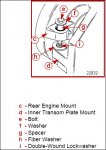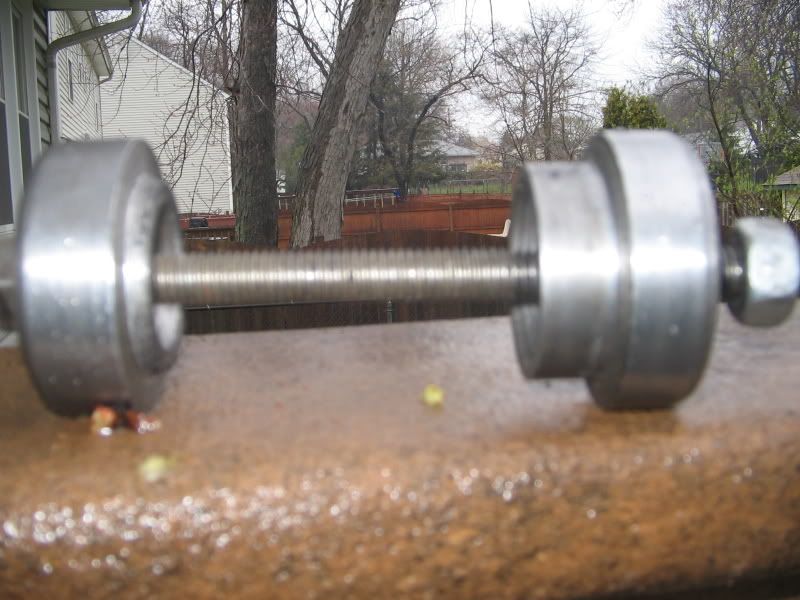I have a 95 Mercruiser I/O 3.0LX (Engine S/N :0F299792, model:4443L100HS). I recently ruined a coupler after installing my rebuilt motor with the mounting washers incorrectly (double wound and fiber washer were incorrectly placed on top). After reinstalling new coupler and attempting to realign the engine (with the mounting hardware properly installed), I still ended up having to place an extra flat washer between the transom rear mount and the bell housing. Specifically, in the following picture below, I moved the washer (labeled "f") to be directly on top of the double wound lock washer (labeled "i").

From reading other threads, this implies that my rear mounts have slipped or moved down inside the transom plate. However, I have not found any specifications that confirm this. Other than the fact I need to have the "extra" washer in place to get my motor properly aligned, is there some other specification I could check to verify that I do indeed need to have the rear motor mounts replaced (or at least moved back up)?
This link provided some tips on how to remove/install the mounts. I was hoping someone could provide the specs for the tool that was pictured in this link: http://forums.iboats.com/showthread.php?t=564217&p=3873653#post3873653
What I still don't understand is how the mounts are kept in place... (or removed for that matter). What keeps the mounts from slipping/moving back down? Seems like a poor design. Should a strong or medium "Lock Tight" be used during installation? Seems like it would make much more sense to have a "stop" or something at the bottom of the transom plate and install the mounts from the top (such that the mounts would only go so far and stop). Furthermore, how do you get the mounts out the bottom with the lock nut holder underneath the mount? So I am confused how mount are removed and reinstalled.
Additional question, how far should the mount (inner ring) be from the top of the transom plate after installation? (this is the same question as the very first question about specs. but worded differently). Should the inner ring be below, flush or above the plate? If above or below the plate, how far above/below?
What is the likelihood of the mounts moving further? That is, can I just leave this as is (as long as the engine is properly aligned)? Or are the mounts likely to further drop as time goes on and eventually cause another coupler failure?
Thanks for any help.

From reading other threads, this implies that my rear mounts have slipped or moved down inside the transom plate. However, I have not found any specifications that confirm this. Other than the fact I need to have the "extra" washer in place to get my motor properly aligned, is there some other specification I could check to verify that I do indeed need to have the rear motor mounts replaced (or at least moved back up)?
This link provided some tips on how to remove/install the mounts. I was hoping someone could provide the specs for the tool that was pictured in this link: http://forums.iboats.com/showthread.php?t=564217&p=3873653#post3873653
What I still don't understand is how the mounts are kept in place... (or removed for that matter). What keeps the mounts from slipping/moving back down? Seems like a poor design. Should a strong or medium "Lock Tight" be used during installation? Seems like it would make much more sense to have a "stop" or something at the bottom of the transom plate and install the mounts from the top (such that the mounts would only go so far and stop). Furthermore, how do you get the mounts out the bottom with the lock nut holder underneath the mount? So I am confused how mount are removed and reinstalled.
Additional question, how far should the mount (inner ring) be from the top of the transom plate after installation? (this is the same question as the very first question about specs. but worded differently). Should the inner ring be below, flush or above the plate? If above or below the plate, how far above/below?
What is the likelihood of the mounts moving further? That is, can I just leave this as is (as long as the engine is properly aligned)? Or are the mounts likely to further drop as time goes on and eventually cause another coupler failure?
Thanks for any help.





















